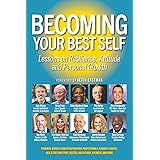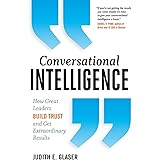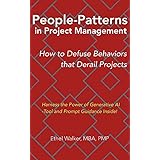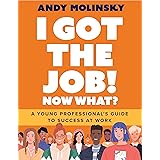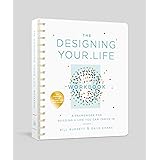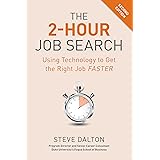Mastering Your Job Interview Mindset
The first critical step in any successful job interview is cultivating the right mindset. Most candidates approach interviews from a position of gratitude and slight desperation, thinking, “I hope they like me.” However, as Erin wisely points out, this perspective needs a powerful flip. You are a skilled professional with valuable contributions to offer, and an interview is a mutual evaluation.
Shift your perspective:
- **You are an Asset:** Recognize your value. You possess unique skills, experience, and character traits that would benefit any organization. The company isn’t doing you a favor; they’re looking for solutions, and you are potentially *their* solution.
- **It’s a Two-Way Street:** Just as they are assessing your fit for the role, you are evaluating their company culture, values, and the role’s alignment with your career aspirations. Is this company a good fit for *you*? This empowers you and helps you appear more confident and discerning.
- **The Interviewer Wants to Hire You:** Hiring managers and HR professionals are not looking for reasons to reject candidates; they are actively seeking reasons to extend an offer. They want to find the right person so they can fill the position and move forward. Your role is to confirm their initial positive impression and make their job easier. Walk in as their ideal candidate, ready to solve their problems.
Embracing this mindset empowers you to project confidence, professionalism, and genuine enthusiasm, which are highly attractive qualities to any employer.
Strategic Job Description Analysis and Keyword Integration
Your job description is more than just a list of duties; it’s a cheat sheet for your interview. Erin highlights its importance, especially for initial filtering interviews conducted by HR. These interviewers often use the job description as a checklist, listening for specific keywords and competencies.
- **Deconstruct the Job Description:** Reread the job description meticulously. Identify the top 10-15 keywords, skills, and responsibilities mentioned. These are the “checkboxes” your interviewer is looking to tick off.
- **Script Keyword-Rich Answers:** Prepare answers to common interview questions (e.g., “Tell me about yourself,” “Why are you interested in this role?”) by naturally embedding these keywords. For instance, if the job requires “project management” and “cross-functional team collaboration,” ensure your examples showcase these specific phrases. Practice these answers until they sound prepared but not robotic.
- **The STAR Method for Storytelling:** Many behavioral questions (e.g., “Tell me about a time you overcame an obstacle,” “Describe a situation where you failed”) require you to share specific experiences. The STAR method is invaluable here:
- **S**ituation: Briefly set the scene and context.
- **T**ask: Describe your responsibility in that situation.
- **A**ction: Explain what you *did* to address the task.
- **R**esult: Detail the positive outcomes of your actions, quantifiable if possible.
- **Leverage Glassdoor for Specific Insights:** As mentioned in the video, Glassdoor.com is a goldmine. Search for the company, navigate to the “Interviews” section, and review reported interview experiences and specific questions. This can provide invaluable foresight into the types of questions you might encounter.
In-Depth Company and Industry Research
Thorough research goes beyond just knowing what the company does; it demonstrates genuine interest and foresight. Erin outlines key areas, and here’s how to maximize your effort within the recommended 30-60 minute timeframe.
- **Company Website Deep Dive:**
- **About Us/Mission/Values:** Understand their core beliefs and how they present themselves to the world. Weave their values into your answers to show alignment.
- **Products/Services:** Familiarize yourself with their offerings. How do they work? What problems do they solve?
- **Careers Page:** This often reveals benefits, culture descriptions, and sometimes even employee testimonials. It’s a subtle way to learn about their 401K match, paid leave, or professional development opportunities.
- **Leadership Team:** Knowing who leads the company and their vision can provide context for your questions.
- **Google News for Current Events:** Type the company name into Google and click the “News” tab. Look for:
- Recent awards or recognition.
- Major announcements (mergers, acquisitions, new product launches).
- Industry trends impacting the company.
- Any recent challenges or controversies the company has faced.
- **LinkedIn Networking and Intelligence:**
- **Company Page:** Explore the company’s LinkedIn page. Look at their posts, recent hires, and employee engagement.
- **People Tab:** This is a powerful feature. Browse current employees. Do you have any mutual connections? Did anyone attend your university or work at a previous company you’ve been with? As Erin notes, reaching out with a personalized connection request (“Hi [Name], I’m interviewing at [Company] next week and saw we both went to [University]. Do you have any insights or tips?”) can be a “super weapon,” potentially leading to an internal referral that significantly boosts your candidacy.
- **Interviewer’s Profile (If Known):** A polite glance at their profile can reveal shared interests, career paths, or professional achievements. This knowledge can help you build rapport, but avoid mentioning anything overly personal. They will see you viewed their profile, which often signals proactive research.
Crafting Impactful Questions for Your Interviewers
At the close of an interview, when asked, “Do you have any questions for us?”, your response is another critical opportunity to impress. The only wrong answer is “No.” Always have 4-5 thoughtful questions prepared.
- **Demonstrate Genuine Interest and Critical Thinking:** Avoid generic questions that could be answered with a quick search. Instead, ask questions that show you’ve done your research and are thinking deeply about the role, team, and company’s future.
- **Types of Questions to Consider:**
- **Role Clarity:** “What does a typical day look like for someone in this role?” or “What are the immediate priorities for this position in the first 90 days?”
- **Team Dynamics & Culture:** “How would you describe the team I’d be working with, and what’s the collaboration style like?” or “What opportunities are there for professional growth within the company?”
- **Company Vision & Challenges:** Referencing your news research, “I noticed the company recently [specific news event]. How do you envision this impacting my role or the team’s objectives?” or “What are some of the biggest challenges this department or company is currently facing?”
- **Performance & Feedback:** “How is success measured in this role?” or “What kind of feedback and support can I expect to receive?”
- **Next Steps:** “What are the next steps in the interview process?”
- **Remember, You’re Also Interviewing Them:** Your questions are also for *your* benefit. They help you gauge if the company culture, the role’s responsibilities, and the team environment align with what you seek in your next professional chapter.
Preparing Your Professional Interview Attire
While skills and experience are paramount, presentation matters. Your interview outfit and overall hygiene communicate professionalism and respect for the opportunity. Erin’s simple rule holds true: “You can’t be overdressed, but you can be underdressed.”
- **Dress for the Industry and Company Culture:**
- **Formal Industries (Law, Finance, Senior Leadership):** Opt for business formal—a conservative suit (black, navy, charcoal), collared shirt/blouse, polished shoes.
- **General Professional Roles:** Business professional or business casual is often appropriate. This could be a blazer with tailored trousers or a skirt, a clean blouse or button-down shirt, and professional footwear.
- **Creative/Tech Industries (More Relaxed):** Err on the side of “smart casual” or elevated business casual. Dark, well-fitting jeans or chinos with a blazer, a stylish top, and neat shoes can work, but always elevate it slightly beyond daily wear.
- **Hygiene and Presentation are Non-Negotiable:**
- **Cleanliness:** Ensure clothes are clean, stain-free, and wrinkle-free. Shower, brush your teeth, and use deodorant.
- **Fit:** As Erin emphasizes, “The fit is almost more important than the clothes.” Ill-fitting clothes (too baggy or too tight) can distract and convey a lack of attention to detail. Consider tailoring if necessary.
- **Modesty and Comfort:** Choose an outfit that allows you to feel comfortable and confident, without distracting elements. Modesty is generally a safe bet across industries.
- **Virtual Interview Considerations:** Even for remote interviews, dress professionally from the waist up. Ensure your background is tidy, lighting is good, and you maintain eye contact with the camera.
The Power of the Mock Interview
The final, often overlooked, step is a mock interview. This practice session is crucial for refining your delivery, gaining self-awareness, and boosting your confidence. It’s not about memorizing answers verbatim, but about internalizing concepts and practicing articulation.
- **Choose an Honest Evaluator:** As Erin advises, pick someone who will give you candid feedback—a friend, mentor, or career coach, not someone who will just say “You were great, honey!”
- **Recreate the Interview Environment:**
- Dress in your chosen interview outfit.
- Conduct the mock interview in the same setting you’ll use for the real one (e.g., quiet room with good lighting for a virtual interview).
- Have your evaluator ask you common behavioral and technical questions, just as a real interviewer would.
- **Focus on Body Language and Non-Verbal Cues:** Research indicates that
65% of our communication is non-verbal.
During your mock interview, pay close attention to:- **Eye Contact:** Maintain appropriate, consistent eye contact.
- **Posture:** Sit upright, projecting confidence and engagement.
- **Hand Gestures:** Use natural hand gestures to emphasize points, but avoid fidgeting (e.g., playing with hair, tapping fingers).
- **Facial Expressions:** Convey enthusiasm, sincerity, and approachability.
- **Vocalics:** Monitor your tone, pace, and volume. Avoid speaking too quickly or too softly.
- **Refine Your Answers and Delivery:** After each practice question, ask for specific feedback. Were your answers clear? Did you provide enough detail using the STAR method? Did you sound confident and articulate? Use this feedback to tweak your content and delivery for the real interview.
By diligently following these steps, you not only prepare for potential questions but also build the confidence and self-awareness necessary to truly **ace your job interview** and stand out as the ideal candidate. You’ve got this!




